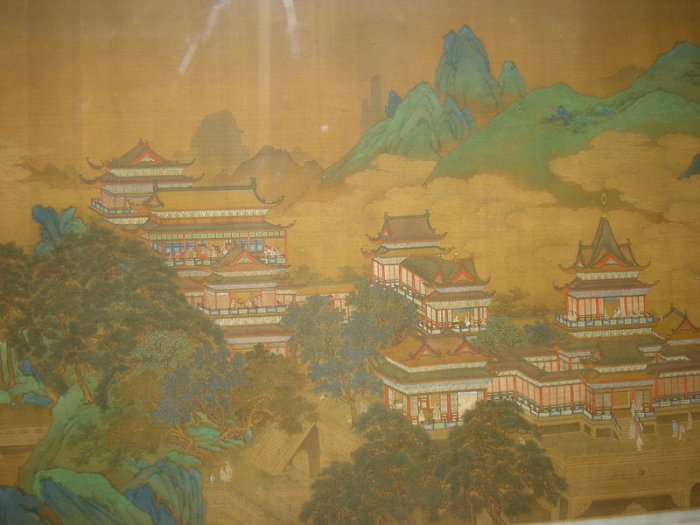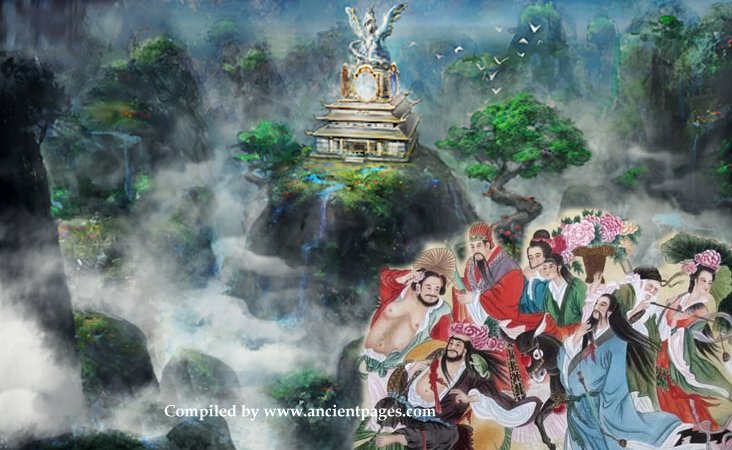Kunlun Mountain – Mythical Dwelling Place Of Gods, Sacred Animals And Symbol Of Axis Mundi In Chinese Mythology
Ellen Lloyd - AncientPages.com -The Kunlun Mountain was a place of great importance to the ancient Chinese.
The sacred mountain was the dwelling place of gods, goddesses, incredible plants, and sacred animals. Its existence shaped Chinese history and symbolized the cosmic axis mentioned in several ancient sources.
Left: A picture of Chiang Tzu-ya at K’un-lun, a depiction of a scene from a story from Chinese myth and legend. Credit: Public Domain. Middle: Peak in the Kunlun range. Credit: Public Domain. Right: 1st–2nd-century lamp in the shape of Kunlun Mountain as the pillar of the sky, a realm of the Queen Mother of the West. Credit: Public Domain
The Kunlun Mountain range does exist. It is one of the longest mountain chains in Asia, extending more than 3,000 kilometers (1,900 miles), forming the northern edge of the Tibetan Plateau south of the Tarim Basin.
The northern rim of the mountain range has long served as the southerly branch of the Silk Road, an ancient network of trade routes that connected China with Central and Southwest Asia.
Mountains can be just as beautiful as dangerous and mysterious. It was often why our ancestors were so captivated by certain mountains, especially those that were not easily accessible.
Kunlun Mountain In Ancient Myths And Legends
Kunlun appears in many ancient myths and legends, and the exact location of this mythical place varies. To the ancient Chinese, Kunlun was the origin of the Chinese civilization and the source of the Yellow River. Other ancient sources say that four rivers flow out of Kunlun Mountain: the Red River, the Yellow River, the Black River, and the Yang River.
Peach Festival of the Queen Mother of the West, a Chinese Ming Dynasty painting from the early 17th century, by an anonymous artist. From the Freer and Sackler Galleries of Washington D.C. Credit: Public Domain
A fifth river that flows around the base of Kunlun, along with the moving sands, prevents people from reaching this heavenly paradise. Only those who practice the art of magic can overcome the obstacles and find their way to Kunlun Mountain.
Many myths describing Kunlun were influenced by Taoist tradition, and in time, the place became regarded as a heavenly paradise.
There are many remarkable ancient stories about the inhabitants of Kunlun Mountain, which were full of unusual fauna and flora.
As explained in another article on Ancient Pages, many legends, myths, and beliefs are associated with the old cult of trees. In a way, a tree was a link between the earthly and supernatural worlds.
Among Christian symbols, we have the Easter palm and Christmas tree, and most civilizations of Mesoamerica cultures have an old belief in the power of the Ceiba Tree. At the same time, cedar is the most sacred tree in the beliefs of Native Americans. Yggdrasil is an eternal and holy tree of life in Norse mythology, and in India, Kalpa Tree' Kalpavriksha' is an ancient wishing tree.
Mount Penglai was just like Mount Kunlun's home to divine beings.
The ancient Chinese believed that on Kunlun Mountain, one could find pearl and jade trees, the Tree of Life, and the fruit of longevity. Legendary ancient Chinese goddess, Queen Mother of the West, had a magnificent palace on the Kunlun Mountain. In her garden grew longevity peaches that would ripen once every three thousand years.
The enigmatic mountain is also home to many animals, including cranes, tigers, birds, and fantastic beasts that only appear in mythology.
According to an ancient legend, King Mu (976-922 B.C) of the Zhou Dynasty once visited Kunlun Mountain. He was astonished when he saw a remarkable Jade palace that belonged to the mythical Yellow Emperor. During his visit, King Mu also met Queen Mother of the West, whom some religious groups even identify with Queen Sheba.
As time passed, Kunlun became identified with Mount Meru, the sacred five-peaked mountain of Hindu, Jain, and Buddhist cosmology. Mount Meru is the center of all the physical, metaphysical, and spiritual universes. Most deities had their celestial kingdom on Mount Meru, considered the center of the universe and the world's axis.
Since there are many accounts of sacred mountains in ancient Chinese mythology, Kunlun Mountain is sometimes confused with or even identified as Mount Penglai, where the eight immortals reside. The difference between these locations is that the legendary Mount Penglai is shrouded in mystery.
"It is a legendary land that many have tried to locate, but so far, no one has succeeded in finding the mythological place where all living creatures are believed to be white, palaces are made from gold and platinum, and jewelry grows on trees. If the place truly exists, it has remained hidden from mortal humans," as mentioned in our earlier article.
Kunlun Was Of Great Historical Importance
The worship of Kunlun goes far back in time. During the Qin dynasty, the first dynasty of Imperial China that lasted from 221 to 206 B.C., people developed a unique cosmological model according to which heaven and earth represented gods. This cosmological perspective was also a political factor; leaders used it to unify their country.
Kunlun became a symbol of the Emperor, making people in the country feel closer to each other.
Archaeologists have discovered bone and bronze inscriptions of the Shang and Zhou Dynasties that show people living during those epochs worshipped Kunlun.
Legends of Mountain Kunlun have been kept alive, and we can read about this fantastic and mysterious paradise in modern poems and other literary works. Several paintings of Kunlun Mountain, its deities, and scenes show events in the ancient Chinese paradise.
Written by Ellen Lloyd – AncientPages.com
Updated on January 2, 2024
Copyright © AncientPages.com All rights reserved. This material may not be published, broadcast, rewritten or redistributed in whole or part without the express written permission of AncientPages.com
Expand for referencesMore From Ancient Pages
-
 Astrape And Bronte – Twin Goddesses Of Lightning And Thunder Carried God Zeus’ Thunderbolts
Featured Stories | Jan 22, 2019
Astrape And Bronte – Twin Goddesses Of Lightning And Thunder Carried God Zeus’ Thunderbolts
Featured Stories | Jan 22, 2019 -
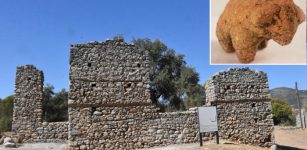 Children’s Toys Among Roman-Era Artifacts Unearthed At Ancient City Of Beçin Turkey
Artifacts | Oct 14, 2020
Children’s Toys Among Roman-Era Artifacts Unearthed At Ancient City Of Beçin Turkey
Artifacts | Oct 14, 2020 -
 Gordian Knot And How Alexander The Great Managed To Outmaneuver The Problem
Featured Stories | Jul 19, 2024
Gordian Knot And How Alexander The Great Managed To Outmaneuver The Problem
Featured Stories | Jul 19, 2024 -
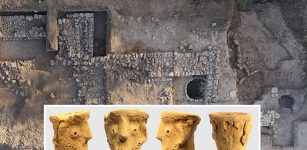 Mysterious Sanctioned Ancient Temple In Jerusalem Create Some Biblical ‘Problems’
Archaeology | Mar 5, 2020
Mysterious Sanctioned Ancient Temple In Jerusalem Create Some Biblical ‘Problems’
Archaeology | Mar 5, 2020 -
 Delphic Mysteries – Extraordinary Encounter At An Ancient Temple – Part 2
Featured Stories | Apr 3, 2023
Delphic Mysteries – Extraordinary Encounter At An Ancient Temple – Part 2
Featured Stories | Apr 3, 2023 -
 Red-Headed Alevi In Kurdistan Could Be Guardians Of Watchers’ Secret Knowledge And Shed Light On The Excalibur Legend
Civilizations | Jan 31, 2018
Red-Headed Alevi In Kurdistan Could Be Guardians Of Watchers’ Secret Knowledge And Shed Light On The Excalibur Legend
Civilizations | Jan 31, 2018 -
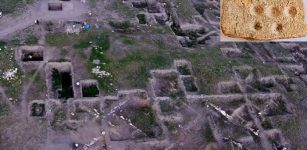 5,000-Year-Old Stone Paint Palette Unearthed In Küllüoba Mound
Archaeology | Sep 9, 2020
5,000-Year-Old Stone Paint Palette Unearthed In Küllüoba Mound
Archaeology | Sep 9, 2020 -
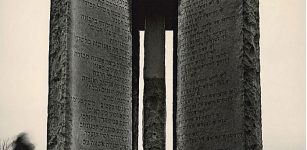 ‘Georgia Guidestones’: Bizarre Ominous And Strange Monument In North America
Featured Stories | Mar 27, 2022
‘Georgia Guidestones’: Bizarre Ominous And Strange Monument In North America
Featured Stories | Mar 27, 2022 -
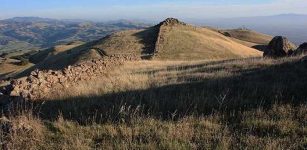 Mystery Of Great Wall Of California: An Ancient Unsolved Enigma
Featured Stories | Oct 28, 2015
Mystery Of Great Wall Of California: An Ancient Unsolved Enigma
Featured Stories | Oct 28, 2015 -
 Unique Medieval Perfectly Preserved Sword Found In The Odra River, Poland
Archaeology | Aug 12, 2020
Unique Medieval Perfectly Preserved Sword Found In The Odra River, Poland
Archaeology | Aug 12, 2020 -
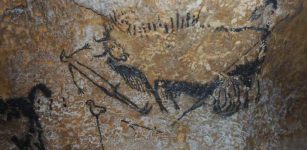 Ancient People Possessed Far Greater Knowledge Of Astronomy Than Previously Believed – Researchers Say
Archaeology | Nov 28, 2018
Ancient People Possessed Far Greater Knowledge Of Astronomy Than Previously Believed – Researchers Say
Archaeology | Nov 28, 2018 -
 Great Heathen Army’s Power Revealed – Previously Unknown Viking Sites And Routes Found In Britain
Vikings | Jan 3, 2025
Great Heathen Army’s Power Revealed – Previously Unknown Viking Sites And Routes Found In Britain
Vikings | Jan 3, 2025 -
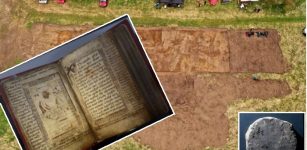 Archaeologists Discover Long-Lost Scottish Monastery Of Deer And Solve An Old Manuscript Mystery
Archaeology | Nov 21, 2023
Archaeologists Discover Long-Lost Scottish Monastery Of Deer And Solve An Old Manuscript Mystery
Archaeology | Nov 21, 2023 -
 Unknown Ancient Structures Discovered At Machu Picchu By LIDAR
Archaeology | Mar 29, 2022
Unknown Ancient Structures Discovered At Machu Picchu By LIDAR
Archaeology | Mar 29, 2022 -
 Rare 3,000-Year-Old Gold Bead Found On Temple Mount By Young Boy
Archaeology | Nov 30, 2020
Rare 3,000-Year-Old Gold Bead Found On Temple Mount By Young Boy
Archaeology | Nov 30, 2020 -
 Prehistoric Anomaly On The Tennessee-North Carolina Border Baffles Scientists
Featured Stories | Jul 30, 2024
Prehistoric Anomaly On The Tennessee-North Carolina Border Baffles Scientists
Featured Stories | Jul 30, 2024 -
 Mayong – Mysterious Ancient Land Of Black Magic In India
Featured Stories | Mar 7, 2019
Mayong – Mysterious Ancient Land Of Black Magic In India
Featured Stories | Mar 7, 2019 -
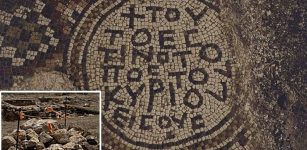 The 6th Century Byzantine Church Hidden Within Khirbet Tinshemet’s Woods – Discovered
Archaeology | Oct 2, 2024
The 6th Century Byzantine Church Hidden Within Khirbet Tinshemet’s Woods – Discovered
Archaeology | Oct 2, 2024 -
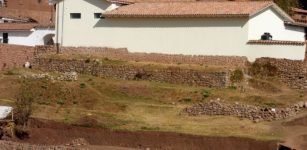 Impressive Inca Agricultural Terraces Discovered In Cusco, Peru
Archaeology | Jan 25, 2018
Impressive Inca Agricultural Terraces Discovered In Cusco, Peru
Archaeology | Jan 25, 2018 -
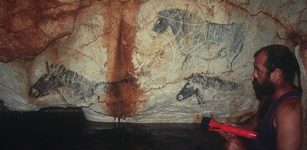 Race To Save Magnificent Underwater Stone Age Paintings Hidden In The Cosquer Cave
Archaeology | Jun 6, 2022
Race To Save Magnificent Underwater Stone Age Paintings Hidden In The Cosquer Cave
Archaeology | Jun 6, 2022


